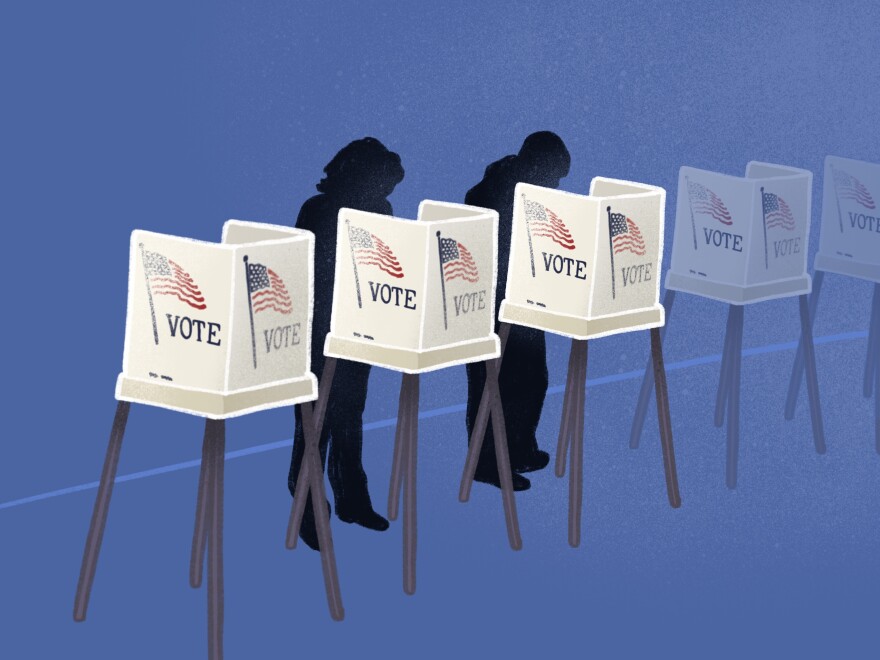While working at polling stations in the St. Louis region for the 2008 presidential election, Gena Gunn McClendon noticed the voting process varied, largely depending on the neighborhood. She observed hours-long wait times, malfunctioning machines and a number of people turned away because they were not registered to vote.
“As a black woman, I am accustomed to things being a little imbalanced, but I just assumed that when it comes to voting that democracy was fair across the board, especially at the local level,” McClendon said.
McClendon, the director of voter access and engagement at Washington University’s Center for Social Development, found that she was not the only poll worker experiencing these inequitable voting issues. Some of her colleagues at the Brown School spoke to her about similar problems at their polling locations.
McClendon and several colleagues decided to study the issue.
On Tuesday, the center published “Will I Be Able to Cast My Ballot? Race, Income, and Voting Access on Election Day.” McClendon co-authored the report with Michael Sherraden, the founding director of the center, Kyle Pitzer and Aura Aguilar.
How they did it
The study looks at the intentional or unintentional relationship race and income have on a person's ability to vote. It also examines the barriers and the challenges that different polling sites present based on income and race.
Field researchers were placed at 10 polling sites in St. Louis County and 10 in St. Louis. The locations were selected based on highly populated black and white neighborhoods and low-poverty and high-poverty communities for both groups.
The authors say that during each election cycle, voters should expect access to a voting location, functioning equipment, adequate numbers of trained staff, ample supplies and forms and enough voting machines.
What they found for predominantly black neighborhoods and low-income communities was the complete opposite.
When looking at race and infrastructure and how it correlates with voting access, one researcher noted hindrances for people with disabilities in poor, mainly black communities. One researcher stationed in the city reported: “Descending concrete stairs to voting entrance into the school’s gym; there was not an alternative from the front entrance.”
Another researcher in a low-poverty, highly concentrated African American community in St. Louis County documented: “Anyone in a wheelchair would have to push back through the line to exit.”
The researchers also looked at signs directing people where to vote at the polling sites. Placards were visible upon entering the locations, but only frequent in predominantly white areas. Signs in generally black neighborhoods were obscure. At one site in the county, a researcher reported: “There was no signage. Voters had trouble knowing where to go when they entered the gym and where to put their ballots.”
There were also reports on long lines and lack of seating for voters in mainly black areas. Researchers observed an extended line at one predominantly white site and at five predominantly black sites.
While in the field, researchers also noted challenges the election staff were having with equipment. One particular researcher paid close attention to the poll-site staff in a high-poverty, predominantly white site in the city and reported: “Looking for keys to the machine and the vote box takes longer than it is supposed to. The new ID law confused some of the workers.”
Not equal or equitable
Though the reports may be shocking to some, McClendon said she was not surprised by the results.
“We hypothesized that what we were seeing was probably the case that lower-income neighborhoods and neighborhoods of high population of blacks things were not equal or equitable,” McClendon said.
Overall, the researchers concluded that data showed what amounted to voter suppression.
Now that these forms of suppression are quantified, McClendon said people must get involved in the voting process.
“The biggest thing we can contribute as a result of this study is encouraging people in this region to sign up, volunteer and get involved on Election Day, because there is only one day that we can vote.”
Gena McClendon joined Sarah Fenske to talk about this study on St. Louis on the Air. Local election board directors from the city and county, Gary Stoff and Eric Fey, also joined them. Listen to their conversation:
Andrea Y. Henderson is part of the public-radio collaborative Sharing America, covering the intersection of race, identity and culture. This initiative, funded by the Corporation for Public Broadcasting, includes reporters in Hartford, St. Louis, Kansas City, and Portland, Oregon. Follow Andrea at @drebjournalist.
Send questions and comments about this story to feedback@stlpublicradio.org.






